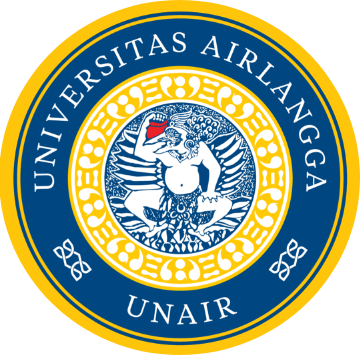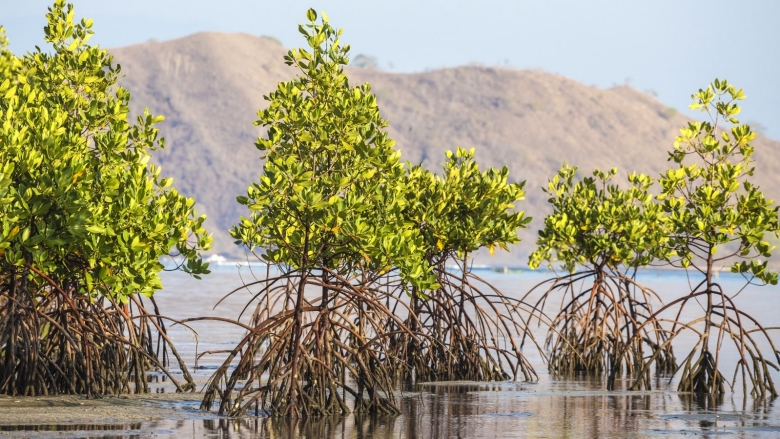Mangrove ecosystem is a type of forest that grows in low tide areas (protected beaches, lagoons, and estuaries) that are inundated when the tide is high and are free from protection at low tide, whose plant communities are salt tolerant. Ecologically, mangroves have many functions as a producer of a number of detritus, trap sediment, protect the coast from the waves of seawater, as well as absorb heavy metals and pesticides that make up the sea. In addition, mangroves are also to be developed into local food sources one type of mangrove that has the potential to become a food source is the pedada type (Sonneratia caseolaris).
Pedada fruit (Sonneratia caseolaris) is a type of mangrove plant located along muddy beaches with low salinity. Pedada fruit has a sour taste and a very distinctive aroma which is the main attraction of the fruit. The use of pedada fruit until now has not been maximized and is popular in the community because there is still a lack of public knowledge about pedada fruit and the sour taste of pedada fruit causes people to tend to like it less. The nutritional content contained in pedada fruit (Sonneratia caseolaris) can be used as a food source.
Pedada flesh (Sonneratia caseolaris) has a high nutritional content and can be used as a food source. Based on a research conducted by Hamsah, the nutritional content of pedada fruit is water content (wb) 79.86%, ash content (db) 7.08%, fat content (db) 1.42%, protein content (db) 6.24%, and carbohydrate content (db) 65.12%. The nutritional content of 100 g of fruit is vitamin A 221.97 IU, vitamin B 5.04 mg, vitamin B2 7.65 mg, and vitamin C 56.74 mg. Pedada fruit (Sonneratia caseolaris) has a very high water content reaching 79%, this causes the pedada fruit to rot easily. So it needs to be processed so that the pedada fruit can be used as a food source. One of the efforts in utilizing pedada fruit is to process it into flour in order to increase shelf life and can be used as an additional ingredient in making noodles.
Noodles are one of the most popular dishes in Asia, one of which is in Indonesia. In Indonesia, noodles are favored by various groups, from children to the elderly, the reason being that noodles have a delicious, practical and filling taste. Dry noodles are dry food products made from wheat flour with the addition of other permitted food ingredients, in the typical form of noodles. Dry noodles are one type of food made from processed flour that is often consumed by most people, both as breakfast food and as a snack.
So far, the manufacture of dry noodles can also be added other than sago flour as a substitute for wheat flour. Therefore, it is necessary to conduct research on the characterization of dry noodles with the substitution of pedada mangrove fruit flour in order to determine the effect of adding the best mangrove flour on dry noodle products. So that this research can increase the diversity of processed pedada fruit flour and can increase public understanding in utilizing non-timber products from the mangrove ecosystem.
The proximate test aims to determine the chemical content of dry noodle products consisting of water, protein, fat, carbohydrates and ash content. The water content test was carried out to determine the water content contained in dry noodles. The value of the moisture content of dry noodles with pedada fruit flour substitution was tested from the control treatment (P0) to P1, P2, P3 which ranged from 2.32%, 2.25%, 2.21%, and 1.95%. Based on the quality requirements of dry noodles SNI SNI 8217 – 2015 (BSN 2015), the water content requirements for quality I dry noodles are a maximum of 8% and for quality II a maximum of 13%. Thus, the water content of dry noodles in all treatments met the quality requirements of dry noodles based on the Indonesian National Standard (SNI) quality I.
The requirement for protein value in quality I dry noodles is a minimum of 11% and for quality II a minimum of 8%. Dry noodles with control treatments (P0), P2, and P3 meet the requirements of dry noodles with Indonesian national standards of quality I because each of the results values are 11.23%, 12.95%, 11.48%, but for dry noodles P1 only meets SNI quality II because of its protein content of 10.75%. Thus, the protein content of dry noodles has met the characteristics of the quality requirements of dry noodles based on the Indonesian National Standard (SNI).
Fat plays a very important role in human nutrition because it is a source of energy, and can improve taste, texture and is a source of vitamins A, D, E, and K [13]. Fat content in dry noodles can be influenced by the fat content in wheat flour and pedada fruit flour, while the fat content in wheat flour is 1.3% (Directorate of Nutrition. Ministry of Health RI, 2010) and the fat content in pedada fruit flour is 1,08%.
The results of dry noodle carbohydrates in this study have a high carbohydrate content. This is because the ingredients used such as wheat flour and pedada fruit flour contain high carbohydrates. The carbohydrate content in wheat flour is 77.3% and the carbohydrate content of pedada fruit flour is 82.29%. In addition, carbohydrates are calculated using the by difference method, so that the nutritional value of each different food ingredient will affect the amount of carbohydrate content.
Author: Dr. Eng. Sapto Andriyono
More information on this research: https://iopscience.iop.org/article/10.1088/1755-1315/1036/1/012080/meta
Citation: Muhammad, F., Andriyono, S., & Pujiastuti, D. Y. (2022, July). Characterization of Dry Noddles with Additional of Pedada (Sonneratia caseolaris) Mangrove Flour as Alternative Food Resource. In IOP Conference Series: Earth and Environmental Science (Vol. 1036, No. 1, p. 012080). IOP Publishing.









